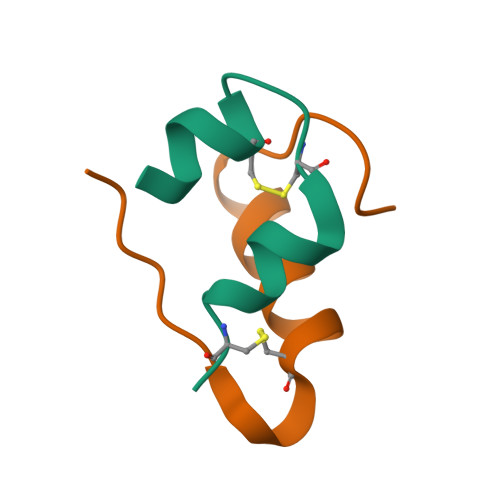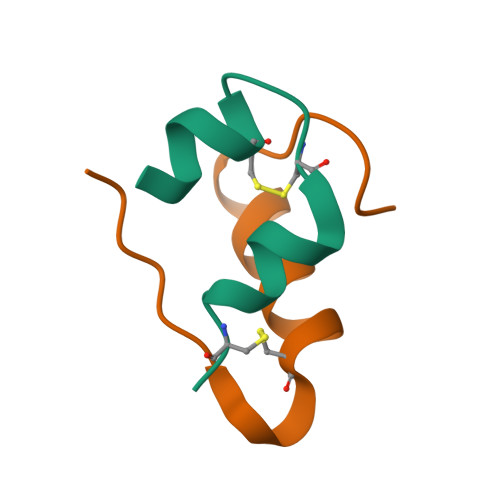Preparation of Selenoinsulin as a Long-Lasting Insulin Analogue.
Arai, K., Takei, T., Okumura, M., Watanabe, S., Amagai, Y., Asahina, Y., Moroder, L., Hojo, H., Inaba, K., Iwaoka, M.(2017) Angew Chem Int Ed Engl 56: 5522-5526
- PubMed: 28394477
- DOI: https://doi.org/10.1002/anie.201701654
- Primary Citation of Related Structures:
5AZZ - PubMed Abstract:
Synthetic insulin analogues with a long lifetime are current drug targets for the therapy of diabetic patients. The replacement of the interchain disulfide with a diselenide bridge, which is more resistant to reduction and internal bond rotation, can enhance the lifetime of insulin in the presence of the insulin-degrading enzyme (IDE) without impairing the hormonal function. The [C7U A ,C7U B ] variant of bovine pancreatic insulin (BPIns) was successfully prepared by using two selenocysteine peptides (i.e., the C7U analogues of A- and B-chains, respectively). In a buffer solution at pH 10 they spontaneously assembled under thermodynamic control to the correct insulin fold. The selenoinsulin (Se-Ins) exhibited a bioactivity comparable to that of BPIns. Interestingly, degradation of Se-Ins with IDE was significantly decelerated (τ 1/2 ≈8 h vs. ≈1 h for BPIns). The lifetime enhancement could be due to both the intrinsic stability of the diselenide bond and local conformational changes induced by the substitution.
Organizational Affiliation:
Department of Chemistry, School of Science, Tokai University, Kitakaname, Hiratsuka-shi, Kanagawa, 259-1292, Japan.

















